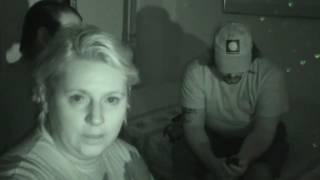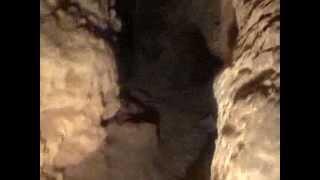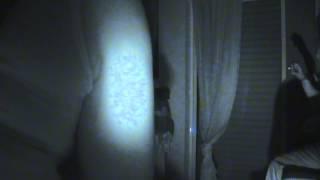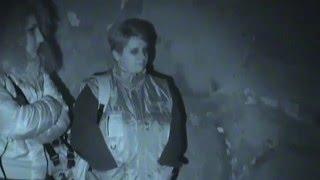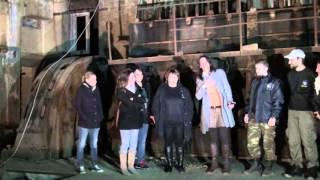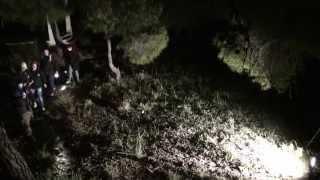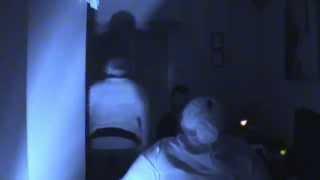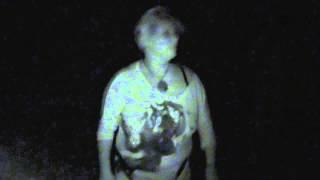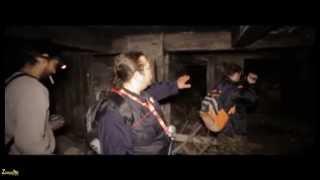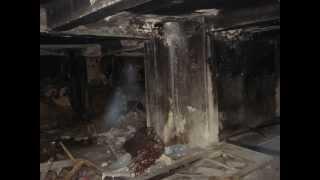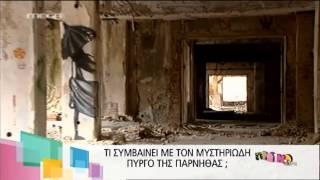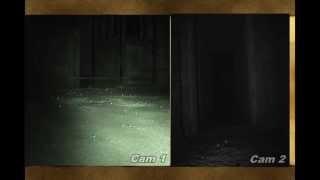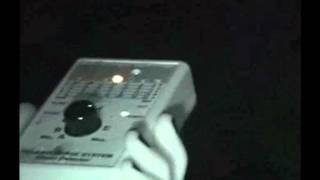In early October 2020, we teamed up with Surrey Paranormal & investigated Westbury House, dubbed the most haunted abandoned building in Britain.
History
In 1722, Westbury was purchased by an Irishman, Sir Peter Warren, who in 1745 captured Louisburg on behalf of the New England colonies and was promoted to rear admiral of the blue. He captured three French ships worth £1,000,000 – a fortune. In 1747 he won a great naval victory off Cape Finestere and was made a Knight of the Bath. He married a fabulously rich American lady, Susanna daughter of Stephen de Lancey. The combined wealth enabled them to build a fine Palladian house at Westbury, and to commission the celebrated early 18th century landscape gardener Charles Bridgeman to design the grounds..
The approach to the house was along a tree-lined drive off the road between the villages of East Meon and West Meon. The drive looped into an oval on the north side of the house, and on the south side were pleasure grounds. Surrounding the house and gardens was a working estate with a farmyard, barns and stables, fields and timber plantations.
In the early 19th century, Westbury passed to Warren’s grand-daughter, Suzannah Maria, who had married her first cousin, Viscount Gage. (The first Baron Gage of Castlebar and Viscount Gage of Castle Island, had been ennobled in 1720, under the Irish Peerage.) The Gage family was based in Firle, West Sussex, and the couple divided their time between there and Westbury
Westbury was bought from the Gage family in 1866 by John Delaware Lewis. In 1904, the Times of London reported the heroism of his son, Colonel Le Roy Lewis, in saving the lives of some of his domestic staff from a devastating fire which destroyed the Palladian mansion:
‘The escape of the occupants was most exciting. The French governess, who occupied a bedroom at the rear of the main part of the house, raised the alarm at about 3am. Her cries were heard by Colonel Le Roy-Lewis, who immediately did what he could to rouse the family. Rushing out of his bedroom he found the staircase burning and the corridors filled with smoke, and all means of escape cut off. His first impulse was to save his five children, and he ran through the flames to the children’s wing and found that that part of the house was safe. Getting out of a window, he scrambled along a narrow ledge to a stack pipe, down which he slid to the ground, a distance of about 40 ft. He rushed to the stables, and with some difficulty roused the stablemen, and with the aid of three of them tried to raise a heavy ladder to the French governess’ window, but it fell and broke.’
‘Owing to the efforts of Colonel Le Roy-Lewis himself, no lives were lost by fire, but the housekeeper, an elderly woman named Jane Henley, who had been in the service of the family for many years, died on the roof from shock and fright before she could be rescued.’
‘The mansion itself is an old one, standing in a well-wooded park of 500 acres, and is in the Queen Anne style. It contained many fine pictures and some rich carving by Gibbons. Most of the rooms were wainscotted in oak, and there was a fine library. All these have been destroyed, only a few articles of furniture being saved. The family lost all their personal belongings.’
The gallant Colonel lost no time in rebuilding the mansion, regardless of cost. Ground-floor rooms included a ‘saloon or lounge’ (45ft by 27ft), with oak-panelled walls and housing a ‘three-manual organ, electrically blown’, an elegant drawing room (72ft by 21ft), fitted with mahogany glazed bookcases of Chippendale design, a dining room (32ft by 21ft), with painted panel walls; plus a study, boudoir and billiards room…. and so it went on, three floors of Edwardian comfort, including a passenger lift and central heating.
The estate was broken up in 1924, when Westbury House became a well-known and successful preparatory school, a use that continued for many years, until the 1980s when it was converted into a nursing home.
After many investigations and CQC inspections the nursing home was shut down because of neglect and abuse that supposedly took place.
Dr Naqvi ran the home in West Meon until 2016 when it was shut down by the Care Quality Commission (CQC) for providing inadequate care.
The property has since fallen into disrepair and Dr Naqvi has been in the process of trying to get planning permission to convert it into 12 flats.
In December 2020 all the files were finally removed from the building.
History
In 1722, Westbury was purchased by an Irishman, Sir Peter Warren, who in 1745 captured Louisburg on behalf of the New England colonies and was promoted to rear admiral of the blue. He captured three French ships worth £1,000,000 – a fortune. In 1747 he won a great naval victory off Cape Finestere and was made a Knight of the Bath. He married a fabulously rich American lady, Susanna daughter of Stephen de Lancey. The combined wealth enabled them to build a fine Palladian house at Westbury, and to commission the celebrated early 18th century landscape gardener Charles Bridgeman to design the grounds..
The approach to the house was along a tree-lined drive off the road between the villages of East Meon and West Meon. The drive looped into an oval on the north side of the house, and on the south side were pleasure grounds. Surrounding the house and gardens was a working estate with a farmyard, barns and stables, fields and timber plantations.
In the early 19th century, Westbury passed to Warren’s grand-daughter, Suzannah Maria, who had married her first cousin, Viscount Gage. (The first Baron Gage of Castlebar and Viscount Gage of Castle Island, had been ennobled in 1720, under the Irish Peerage.) The Gage family was based in Firle, West Sussex, and the couple divided their time between there and Westbury
Westbury was bought from the Gage family in 1866 by John Delaware Lewis. In 1904, the Times of London reported the heroism of his son, Colonel Le Roy Lewis, in saving the lives of some of his domestic staff from a devastating fire which destroyed the Palladian mansion:
‘The escape of the occupants was most exciting. The French governess, who occupied a bedroom at the rear of the main part of the house, raised the alarm at about 3am. Her cries were heard by Colonel Le Roy-Lewis, who immediately did what he could to rouse the family. Rushing out of his bedroom he found the staircase burning and the corridors filled with smoke, and all means of escape cut off. His first impulse was to save his five children, and he ran through the flames to the children’s wing and found that that part of the house was safe. Getting out of a window, he scrambled along a narrow ledge to a stack pipe, down which he slid to the ground, a distance of about 40 ft. He rushed to the stables, and with some difficulty roused the stablemen, and with the aid of three of them tried to raise a heavy ladder to the French governess’ window, but it fell and broke.’
‘Owing to the efforts of Colonel Le Roy-Lewis himself, no lives were lost by fire, but the housekeeper, an elderly woman named Jane Henley, who had been in the service of the family for many years, died on the roof from shock and fright before she could be rescued.’
‘The mansion itself is an old one, standing in a well-wooded park of 500 acres, and is in the Queen Anne style. It contained many fine pictures and some rich carving by Gibbons. Most of the rooms were wainscotted in oak, and there was a fine library. All these have been destroyed, only a few articles of furniture being saved. The family lost all their personal belongings.’
The gallant Colonel lost no time in rebuilding the mansion, regardless of cost. Ground-floor rooms included a ‘saloon or lounge’ (45ft by 27ft), with oak-panelled walls and housing a ‘three-manual organ, electrically blown’, an elegant drawing room (72ft by 21ft), fitted with mahogany glazed bookcases of Chippendale design, a dining room (32ft by 21ft), with painted panel walls; plus a study, boudoir and billiards room…. and so it went on, three floors of Edwardian comfort, including a passenger lift and central heating.
The estate was broken up in 1924, when Westbury House became a well-known and successful preparatory school, a use that continued for many years, until the 1980s when it was converted into a nursing home.
After many investigations and CQC inspections the nursing home was shut down because of neglect and abuse that supposedly took place.
Dr Naqvi ran the home in West Meon until 2016 when it was shut down by the Care Quality Commission (CQC) for providing inadequate care.
The property has since fallen into disrepair and Dr Naqvi has been in the process of trying to get planning permission to convert it into 12 flats.
In December 2020 all the files were finally removed from the building.
Sign in or sign up to post comments.
Be the first to comment




